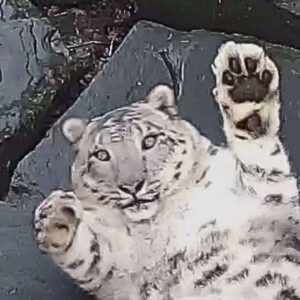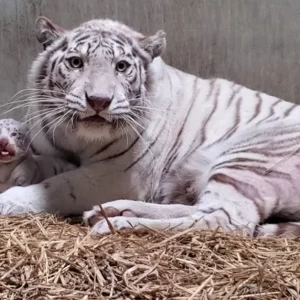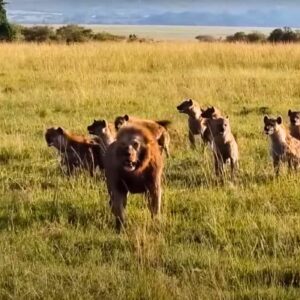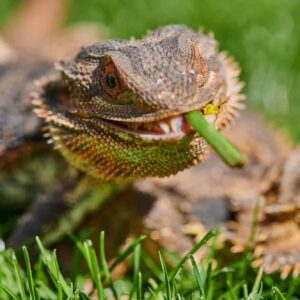Two Jaguar cubs were born at ARTIS Zoo on June 28 and were recently exhibited outdoors. Zoo visitors can now see the male and female cubs, who have a regular base and are practicing their typical conversation skills and great abilities.
The cubs are notable for their appearance. Both exhibit what is known as “color morphism,” with a coat that is black in color (their father is also black). This morphism is known to occur in Jaguar species. Jaguars with melanism appear almost completely black, although their spots are still visible upon close examination.
Melanistic Jaguars (or “black” Jaguars) primarily occur in South America and are virtually unknown in wild populations residing in regions of North America. They are commonly referred to as “Black Panthers,” but they do not form a separate species.
Créditos de foto: ARTIS/Jᴏke Kᴏk
xtremely rare albino individuals occur among Jaguars.
The Jaguar (Panthera onca) is a large felid native to the Americas. It is the third-largest felid species after the Tiger and the Lion, and the largest in the Americas.
The present-day Jaguar range extends from the southern United States through Mexico and much of Central America and South America to Paraguay and northern Argentina. The species has greatly receded from the United States since the early 20th century.
Physically, the Jaguar resembles the Leopard but is generally larger and more robust in build and appearance. Its preferred habitats and prey are closer to those of the Tiger.
Its most attractive habitat is its preferred habitat, but it will open up to a variety of forest and open habitats. Its preferred habitats are usually swamps and wilderness areas, but Jaguars also inhabit populated and desert areas. It is also capable, like the Tiger, of swimming as a cat that always swims.
The Jaguar is largely solitary, an opportunistic predator, and a stalking and ambush predator at the top of the food chain. It is a keystone species; breeding contributes to stabilizing ecosystems and regulating the population of contained animals. The Jaguar has a very powerful bite, on par with the other great cats. This allows it to puncture the armored shells of reptiles and employ an unusual killing method: biting directly into the skull. The prey stalks the ears to give it a fatal bite to the jugular.
The Jaguar is classified as “near threatened” according to the IUCN Red List of Threatened Species, and its species are declining. Threats to the species include loss and degradation of habitat. While international trade in Jaguar IPs and their parts is prohibited, the issue is still frequently killed by humans, particularly by conflicts with ranchers and farms in South America.
ARTIS is part of the European Jaguar breeding program. As a result, the black male and declared female met in last year’s episode, and several episodes were observed. However, the two Jaguars were separated. A female has a gestation period of about three years to develop. The female raised the cubs on her own, and after half a year or two, the young became independent of her.





